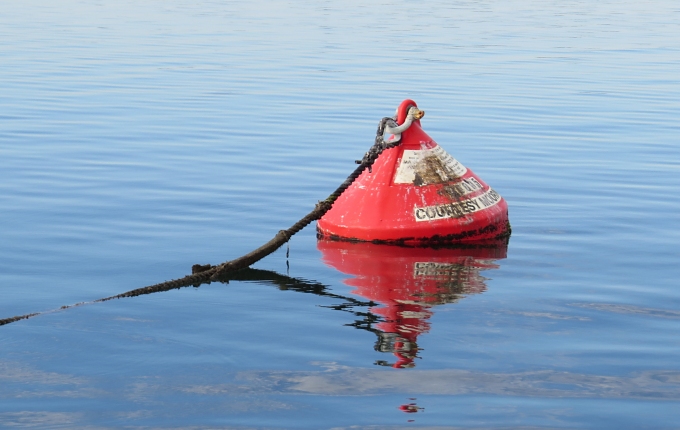Lassoing a Mooring
/Marcie unexpectedly had to go back to the U.S. for a couple of weeks. While she is gone, I will try my hand at writing the majority of our blogs instead of my usual once weekly contribution. I'll do my best to keep them interesting for everyone, but for those of you who could not care less about the technical side of our lifestyle – we apologize. -David
Picking up a mooring is something we do quite frequently, especially here in Australia where many states provide free moorings. These courtesy moorings are well maintained and clearly marked with the maximum boat size they were intended for. We have often been offered the use of municipal, club and even private moorings as well, and as long as we can get some assurance that they are in good shape and large enough for Nine of Cups, we usually gratefully accept the offer.
Sometimes other cruisers inform us that, in some areas, it is perfectly acceptable to pick up any unused mooring. If the owner arrives, he may ask you to leave or he may take another vacant mooring himself. For several reasons, we usually don't follow this advice and drop our anchor instead. The mooring might have been intended for a 23' (5.5m), 4 ton daysailer, and a big boned girl like Cups would drag it all over the harbor. It might have been last serviced by the crew of Mathew Flinders. Then there is the chance the owner will arrive at 2AM, back from a long day of fishing and require us to relocate.
It seems everywhere we go, there is a different method of attaching all the parts of a mooring together. Sometimes the mooring buoy has the pennant attached to the top of it; sometimes there is a pick-up buoy attached to the mooring pennant; sometimes there is only one mooring pennant – sometimes two; sometimes the pennant will fit through our hawse holes, sometimes not. It is usually a surprise until we get the lines out of the water and figure out how we should be making fast to the mooring.
When picking up a mooring, we approach the mooring ball into the wind, and I try to stop Cups just past the pennant. Marcie is at the bow with the boat hook and a dock line at the ready, and her job is to get us attached to the mooring anyway she can. Once we are attached, no matter how tenuously, we can take our time and sort out how best to make fast to the mooring. If conditions are good, the mooring has a pick-up buoy floating next to it, and no one is watching, we can usually pick it up and secure it on the first try. If the wind is gusting, there is no easy way to pick up the pennant, and/or there are other boats to maneuver around, it sometimes takes a few tries. The number of tries it takes is also directly proportional to the number of people watching. I think our record is 13 attempts at the Harlem Yacht Club, when everything went wrong and there were dozens of people watching how these sailors from Colorado go about picking up a mooring. They are probably still chuckling about that bit of evening entertainment 12 years ago.
When there is no pick-up buoy, the process is much more difficult. Sometimes there is just a big round mooring ball floating there with the pennant attached underneath. Other times, there is a ring at the top of the mooring ball. Cups has too much freeboard at the bow to reach the mooring ball, and there is usually no hope of picking up the entire ball with the boat hook. I learned this method of picking up the mooring from another cruiser, and it works quite well.
We attach one end of a dock line to the boat, tie a very large bowline, 6-10 feet (2m-3m) in diameter in the other end of the dock line and route it through the lifelines and outside everything. The dock line should be the sinking variety – polypropylene floats and won't work- and should be long enough that the entire bowline will reach the water with a few feet (~1m) to spare. When the boat comes alongside the mooring ball, Marcie simply drops the bowline over the ball. The line will sink and as the boat drifts back, the bowline will constrict around the chain or rope under the mooring ball. Then we keep tension on the dock line as the mooring ball is pulled up to the boat and we figure out how to attach the boat to the pennant.
The bowline will almost always stay in place until we can get the boat secured – unless there are more than six people watching, in which case we can be sure that we will either miss the mooring ball with the bowline or it will slip off the mooring ball entirely. We find it pays to maintain a good sense of humor.




